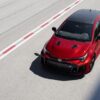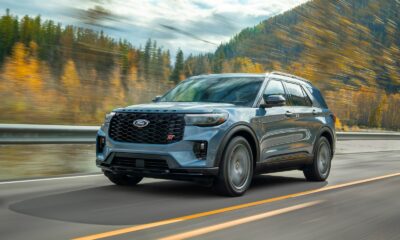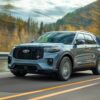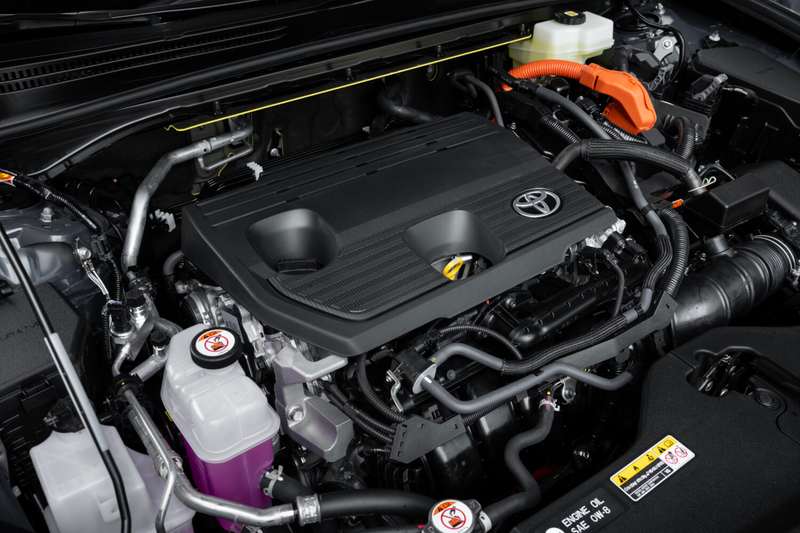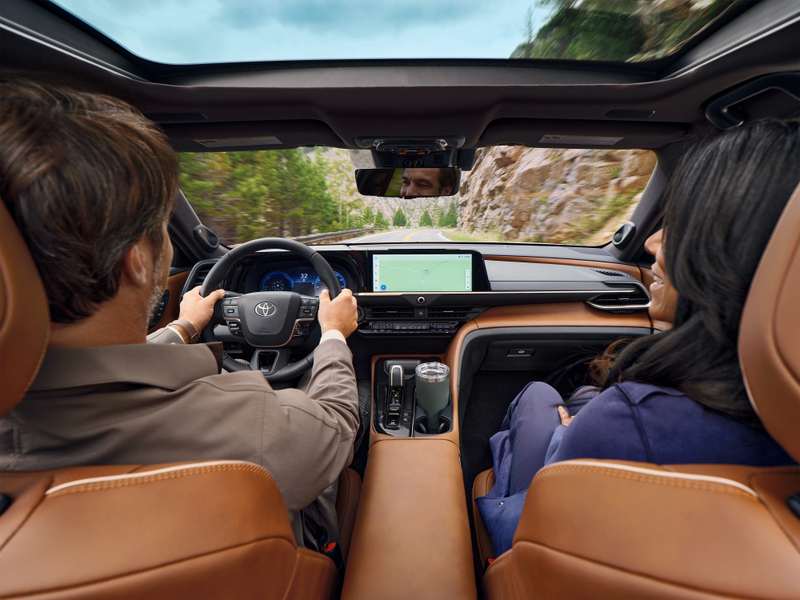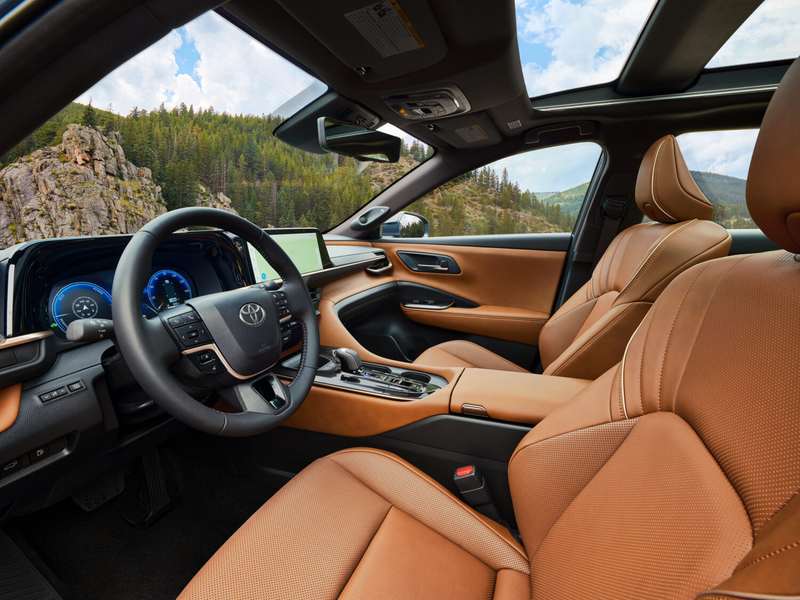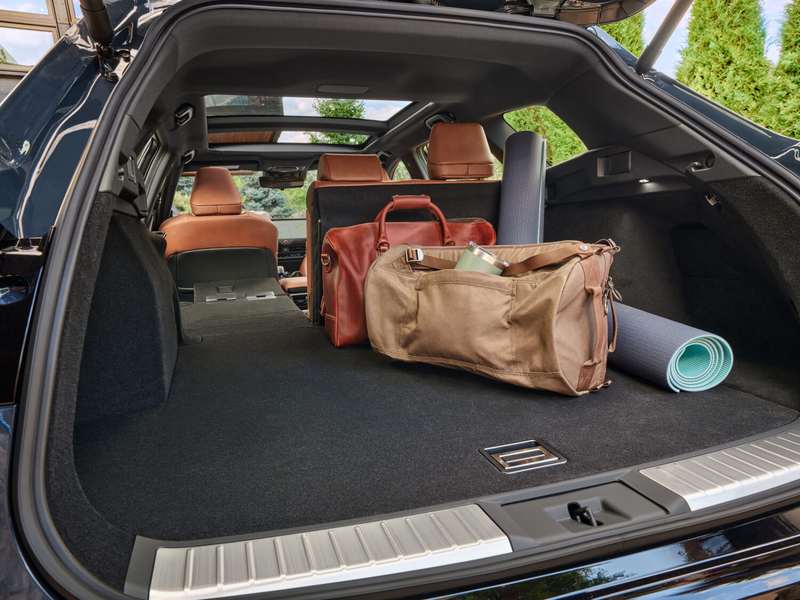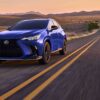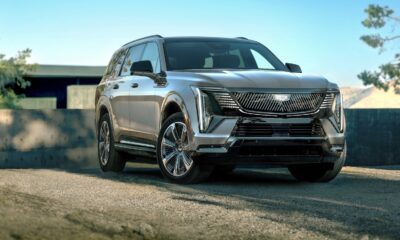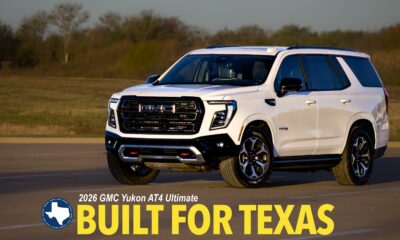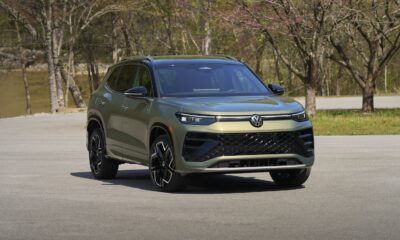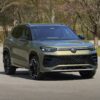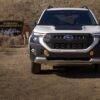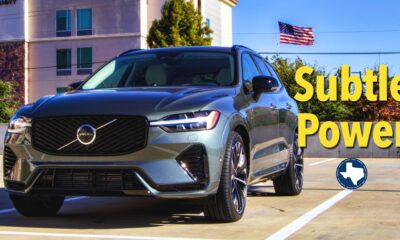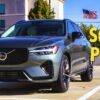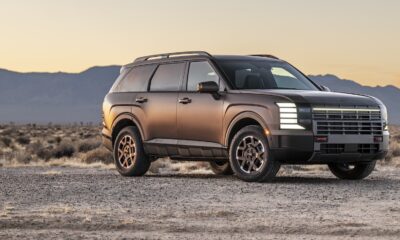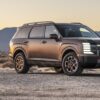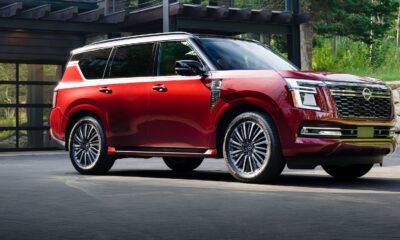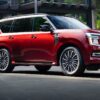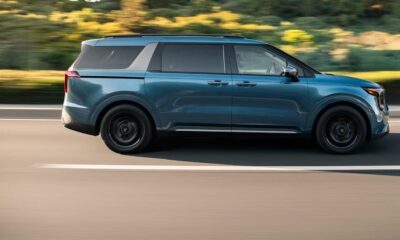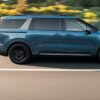Car Reviews
Toyota’s Crown Signia: BLENDING LUXURY WITH EFFICIENCY
Toyota’s Crown Signia:
BLENDING LUXURY WITH EFFICIENCY
COSSATOT FALLS, Ark.—Zipping down a rutted and dusty gravel road with the sure-footedness of a mountain goat, the 2025 Toyota Crown Signia demonstrated why it is taking a bite out of the Subaru Outback’s lucrative market.
OK, make that the top slice. The Lexus-adjacent Signia starts at around $44,000, or about $10,000 more than a base Outback, but provides much better fuel economy, crisper driving characteristics, and an ambiance level unmatched in even similarly priced top-of-line Outback trims. This is not to say the Signia sparkles off the beaten path. That is just one of many things it does well.
If there is a winner in the tariff war, it may be the Signia. A 25% tariff adjustment would add $12,000 to a Signia. Instead, Toyota chose to amortize, for lack of a better term, tariffs across its entire portfolio to an average of $270 per vehicle.
America’s second-largest auto manufacturer, two market-share points behind GM, Toyota operates 11 American plants. Last year, Toyota built and sold 2 million vehicles in North America. With higher domestic content than most things built by the Big Three, Toyota has a substantial chunk of tariff-free cars and trucks across which it spread the new tax cost, just like we all pay higher insurance rates to cover the costs of disasters hundreds of miles away. So, Tacos and Camrys went up $270, and the Signia went up $500.
Subaru builds the Outback in Indiana but pays tariffs on imported drivetrains and electrical components. It boosted the Touring XT $1,820 to $46,150, or about $1,800 less than a top-of-the-line Signia Limited. That is close enough to make the Toyota the clear value winner, especially when considering the brand’s more extensive dealer network and the rock-solid reliability of its hybrids. Savings in fuel costs alone will make up the difference in less than four years.
SUV or wagon?
The Crown Signia, which shares platform and drivetrain with a sedan – simply the Crown – is a two-row, hybrid-only, all-wheel-drive crossover with a wagon’s proportions. Toyota calls it an SUV, but it looks like a slick station wagon. If it gets buyers to blend sedan-like driving manners with SUV-like utility — a sweet spot if you want space and comfort without the bulk or fuel penalty of a crossover – I am all for it.
It targets buyers who want quiet, efficiency, and near-luxury amenities without moving to a luxury badge. It competes with high-trim mainstream two-row SUVs (Honda Passport, Jeep Grand Cherokee), upscale compacts (Acura RDX, Lexus NX/RX), and raised wagons (Subaru Outback, Volvo V60/V90 Cross Country).
Critics praise the car’s stellar efficiency, generous standard features, and refined ride. Those who grew up with Detroit muscle bemoan its powertrain noise under heavy throttle, while Asian tuners love how it winds out. On winding mountain byways, it is highly stable and quick.
It has below-average cargo capacity for the class, but this is not a vehicle for large families and dog trainers.
A quick size and mission check helps set expectations. This model aligns more with road-trip serenity than rugged trail work. Its interior skews premium for a non-luxury badge, matching the Crown sedan’s hardware and tech suite. AWD engages for all-weather confidence rather than off-road feats.
Looks like a wagon
The Crown Signia is a sleek, long-roof crossover: 194.1 inches long, 74.0 inches wide, and 64.2 inches tall, with a 112.2-inch wheelbase. It rides lower than many midsize SUVs but higher than most cars. That makes for easier entrances and exits but provides ample ground clearance for rocky roads.
Signia uses the Crown family’s clean surfacing and slim lighting to create an elegant, urban vibe. The design expresses current Toyota cues—horizontal grille elements, sharp lamp signatures—and mirrors the Crown sedan’s premium visual language. It has a handsome stance. A low roofline emphasizes its road-biased mission.
The Lexus comparisons are not accidental. Toyota fitted acoustic front side glass and added sound-absorbing measures to quiet the cabin. The shape favors aerodynamics and highway efficiency over trail clearance.
Joy to drive
Toyota pairs a 2.5-liter four-cylinder with front and rear electric motors, standard AWD, and an e-CVT. Combined output is around 243 horsepower. Zero to 60 mph runs in the seven- to eight-second range; it’s adequate – albeit not brisk – acceleration.
AWD behavior supports all-weather traction more than off-road use. The electronic on-demand system can send up to 80% of available torque rearwards when slip or demand calls for it. Toyota rates towing at 2,700 pounds, which matches several direct rivals’ light-duty tow ratings.
EPA estimates come in at 39 mpg city, 37 highway, and 38 combined, with a rated range of about 551 miles per tank. We took the car on three road trips, averaging around 200 miles each, and saw comparable results.
Plush cabin
The cabin mirrors the Crown sedan’s layout and materials, with logical controls, physical buttons for primary functions, dual 12.3-inch displays, and available leather in tasteful tones. With superb fit, finish, and premium materials, it has an upscale feel for a non-luxury badge. Standard are heated and ventilated front seats, heated rear seats, a heated steering wheel, and a hands-free power liftgate. Seating earns repeated praise for support and long-drive comfort.
Space prioritizes passengers first, cargo second. Toyota quotes 25.8 cubic feet behind the rear seats without the panoramic roof and 24.8 cubic feet with it. The payoff is a long-roof silhouette that trims wind noise and returns standout range for the segment.
A configurable driver display and responsive central touchscreen modernize the experience, while physical keys keep everyday actions direct.
Compared to the chief competitors:
- Subaru Outback offers more cargo room and higher ground clearance, with less refinement and efficiency.
- Honda Passport provides more utility and off-road-leaning trims, with lower fuel economy and less standard luxury content.
- Lexus NX/RX matches or exceeds the luxury finish but runs higher in price or trades away some efficiency in more powerful variants. Edmunds and Motor Trend place the Crown Signia on the line between premium mainstream and entry luxury, without the badge premium.
Solid tech
Toyota Audio Multimedia. Wireless Apple CarPlay, Android Auto, wireless phone charger, and multiple USB-C ports are standard.
The system’s touch response, menu logic, and voice prompts present a few barriers.
Driver-assistance coverage is comprehensive out of the box. Toyota Safety Sense 3.0 brings adaptive cruise control with lane centering, pre-collision with pedestrian detection, lane departure warning with steering assist, automatic high beams, and traffic sign recognition. Blind-spot monitoring and rear cross-traffic alerts are also standard.
Toyota’s driver-assist tech is among the best in the business. Adaptive cruise and lane tracing maintain smooth gaps and stable lane keeping at highway speeds, with surround-view cameras aiding in tight lots on higher trims.
Standard safety includes automatic emergency braking with pedestrian detection, lane departure alert with steering assist, automatic high beams, road sign assist, blind-spot monitoring, and rear cross-traffic alert. Limited adds additional parking sensors and advanced camera functions through packages.
Pricing and value
Our tester was a Limited model with the $1,865 advanced technology package, featuring a panoramic moonroof, lane-change assist, and traffic jam assist. With delivery, it stickered at $52,149.
Value relative to competitors breaks down cleanly:
- Compared to Outback and Passport, Crown Signia costs more at the base but returns far better fuel economy and more standard comfort features. Buyers trading cargo and ground clearance for mpg and refinement may find parity in ownership cost over time.
- Compared to the Hyundai Santa Fe Hybrid and Mazda CX-70, Toyota is the most efficient and quiet-ride pick, with fewer variants and a simpler lineup. Santa Fe offers HEV and PHEV paths at various prices and capabilities, with CX-70 favoring dynamics and design.
- Compared to Lexus NX/RX, Crown Signia offers similar comfort and tech for slightly less money and higher mpg in some trims, but without the luxury badge and dealer experience.
Bottom line
Shoppers who prioritize long-range fuel economy, all-weather traction, and near-luxury content within a two-row footprint will find Crown Signia compelling. Those who need maximum cargo, trail-friendly clearance, or quicker thrust will favor Outback, Passport TrailSport, or a turbocharged competitor. Those who want luxury branding, softer leather, or a quieter powertrain under full load will find Lexus NX/RX or other luxury crossovers a better fit.





